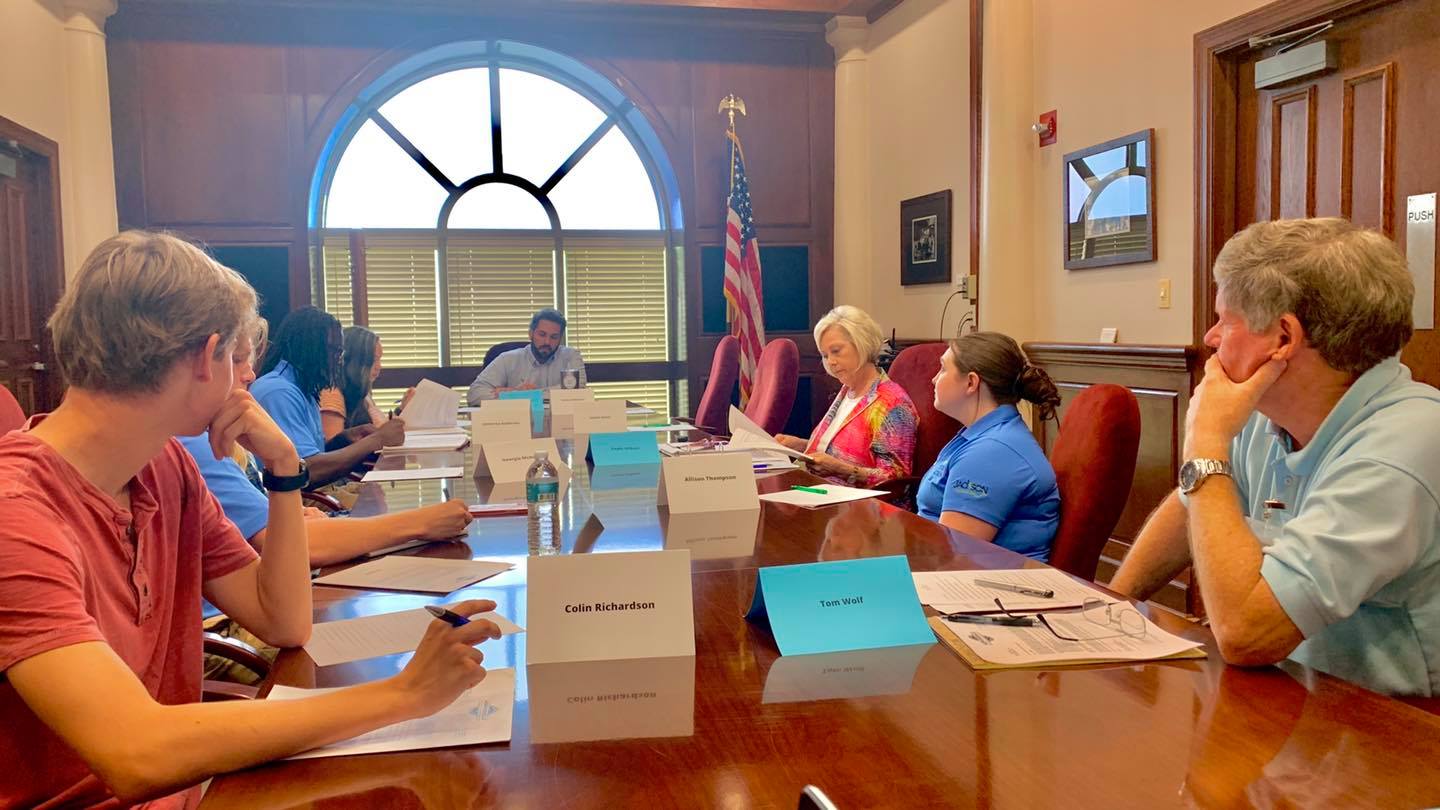Negative perceptions, divisions leading younger generations from careers in municipal government

By KATE COIL
TML Communications Specialist
While many local governments were struggling to fill positions prior to 2020, the pandemic combined with the Baby Boomer generation reaching retirement age has meant that municipal governments are struggling now more than ever to hire for open positions.
A recent survey by the Mission Square Institute found that 38% of state and local government employees who were retirement eligible had accelerated their retirement date and a full 52% of local and state employees were considering leaving their position – either retiring or moving into the private sector – due to factors like burnout and low pay.
“Retirees are not being replaced by new workers, as applications for state and local government jobs dropped by an alarming 32 percent between fiscal years 2019 and 2021,” the survey stated. “This is also visible in opening rates: The hires-per-job opening ratio for state and local government (excluding education) is lower than for all other private sector industries.”
Recruiting younger employees can help bridge the gap, but many local governments are struggling to recruit and retain employees from younger generations. One reason for this may be that many younger citizens feel disconnected from government.
PERCEPTIONS AND DIVISIONS
Stacy Richardson, chief of staff for the National League of Cities (NLC), said many municipalities find that how younger people perceive both local government and governments in general can sometimes be an obstacle.
“There is a big perception problem at play,” she said. “Many people – especially younger people – see the hyper-partisan rhetoric happening at the state and federal level is becoming increasingly localized and think public service is not a worthwhile endeavor. They may feel like they can make more of a difference in the private sector – either for a non-profit or mission driven for-profit organization.”
Jacob Gottleib, a research specialist with NLC’s Center for City Solutions, said with corporations and nonprofits marketing themselves as places that provide public good, local governments may need to rebrand their own message of the positive change and community good government employees can accomplish.
“The public sector used to have this capitalization of social enterprise,” he said. “People felt if they worked for local government, they could bring about change in their community. Governments need to update that message a little and give it a facelift. Instead of talking about making changes in your community, talk about making systems change in your community. The concept of social enterprise needs updating because we don’t have the ownership over that so much anymore in the public sector.”
Another part of the perception problem is that many young people feel present local government structures and officials don’t reflect who they are, their goals, or their values. A recent survey of young adults between the ages of 18 to 36 conducted by Next100 and GenForward found that while 48% of young citizens consider themselves politically engaged or active, they don’t feel represented by local, state, or government representatives.
Many felt there is a disconnect between themselves and who is representing them in government and are skeptical that local governments would want to hear or encourage their ideas, whether in a council meeting or as a city employee. The survey found many youth voters thought signing a petition could cause more political change than taking on a local government role.
The survey also found young adults feel that governments dominated by “largely white, male and wealthy” officials who are “out of touch and exclusionary.” Only 24% of survey respondents agreed with the statement “I believe local government wants to hire someone like me” and only 18% agreed with the statement “I want to work in local government at some point in my career.”
Gottleib said Millennials and Gen Z are statically more diverse than older generations, and a lack of existing diversity in local government may give negative perceptions. As a result, local governments need to help these candidates see themselves in public sector roles.

“A lack of diversity can make it harder to recruit diverse talent,” he said. “There is a lot that can be done. NLC found BIPOC communities are largely under-represented in local government workforces. One of the most recommendations from NLC’s survey on this issue is to hire a dedicated staff person to focus on this internally. Hiring a chief diversity officer, a chief inclusion officer, or chief people officer or a person whose specific role is to make sure these things are being implemented generationally.”
The political divisions at play in creating perception issues also may discourage younger employees from seeking out government jobs for another reason: safety.
“This is a major challenge to public service as a whole –and not just when it comes to recruiting younger talent,” Richardson said. “We recently reported that over 80% of municipal officials have experienced threats of violence in the last year. It is critical that we stem this wave of divisiveness so that people from all walks of life and all ages feel like engaging the political system is safe and worthwhile.”
Gottleib said a report published by NLC last year highlighted how rising violence is contributing to a lack of interest in government jobs.
“It creates a barrier to work,” he said. “Why would you want a job that makes you put up with that. It’s a perception issue, but it is also an issue of personal safety. Communities need to be investing and ensuring the safety of their workers given the political climate. We have seen since 2020, more communities are making those investments but some communities are still hesitant to because of the perception that they are spending taxpayer dollars on protecting themselves.”
BARRIERS AND PATHWAYS
Some contributing factors may also be that the hiring process and requirements for many state and local positions are barriers to employment. The U.S. Bureau of Labor Statistics found that state and local government positions are more likely to require postsecondary education than the public sector, even though such degrees may not be necessary for job function. Many government entities also lack the HR staffing need to individually evaluate the hiring process, which can mean revising job descriptions to make them easier to fill or assessing individual skill and potential.
According to the Center for American Progress (CAP), many governments are using ARP funding to help leverage wages to make positions more attractive or invest in recruitment and training. Gottleib said he has had a lot of discussions with city officials who found that certain accreditation or degree requirements are barriers to filling positions.
“There are a lot of jobs that people don’t need a bachelor’s degree for if they have a high school degree, an associate’s degree or experience,” he said. “Many roles can even just be taught. By reducing some educational requirements, you can tap into more Millennial and Gen Z workforce participants. You can still give preference to college-educated candidates, but maybe remove questions like that on applications because you see that on their resume.”
Gottleib said one major barrier is that younger employees may not have the knowledge of what jobs are available in local government, let alone how to apply for those positions.
“Local governments historically have tended to underinvest in youth and young adult pathways into government roles.,” he said. “A lot of times, younger people may not be aware of all of those job opportunities that are available. Everyone knows that there is a city manager, city planner, or head of parks and rec, but not everyone knows about jobs like codes inspector. Along with that, there is a lack of understanding of how to find and access those jobs. “
The survey results found only 38% of respondents to the survey said they knew how to get a local government job with white respondents the most likely to know how to be employed by the local government (42%) and Asian respondents the least likely (29%). Respondents with a household income of $60,000 or more were also more likely (43%) to know how to get a local government job than those with an income of less than $60,000 (34%).
"Government in general – not just local government – has not set up the pathways for younger people to get into service,” Richardson said. “Whether that’s internships, or targeted recruiting for entry level positions. This lack of investment has meant there isn’t a clear path into the public sector workforce for many younger people. There are several tactics that can be taken – by local governments, individuals and the broader community. The foundation of our local democracy is trust – so municipalities can take steps to be more transparent and open to the community.”
FINDING SOLUTIONS
Richardson said there are several things cities can do to make the path to government jobs easier for potential recruits.
“This could be through internship programs that allow younger people to see how government works,” she said. “Many local governments have also begun hosting ‘101’ type community courses that are available to the public. These not only spark interest in government careers, they bring more transparency to the way government operates. The job of building local democratic institutions rests with everyone so everyone has a role to play. From voting to staying informed on local events or volunteering to teach a civics course – investing in local democracy has never been more important. Building intentional career pipelines and strategies is critical to engaging the next generation of public service. This can take the form of more flexible work schedules, having career days at local schools, or apprentice programs.”

Gottleib said being upfront with potential employees about what they can expect from government work can go a long way toward recruitment.
“I think it’s OK to be upfront with them about the Silver Tsunami and explain that because of this there are going to be a lot of job opportunities,” he said. “The most important thing for students coming out of college is securing a stable job that can pay them enough to support their needs and provide benefits. Local government jobs can do that for the most part. Communities need to be willing to have a candid discussion and acknowledging the current state of their workforce with labor participants. Seeing the security and the opportunity will drive more people to seek more local government.”
Other initiatives that have proven to be successful to cities include offering remote or hybrid work and flex schedules; allowing floating holidays or unlimited PTO; prioritizing the dismantling of bureaucracies to operate more agilely and responsively; modernizing health benefit offerings; providing on-the-job training’; designing accelerated career paths and education opportunities; giving workers more autonomy; and involving younger or new employees in decision-making.
For more small municipalities, there are also things that can be done that raise the attention of government available positions while not spending a great deal.
“Smaller cities may have a unique challenge setting up talent pipelines because of their limited staff capacity,” Richardson said. “However, simply changing your marketing materials to be more targeted can yield higher results. Making sure that your existing policies that may be attractive to younger generations are featured prominently on materials you send to local high schools and colleges.”
Gottleib said smaller local governments looking to recruit younger employees should consider more flexibility.
“It is important to consider flexible work options, whether that means remote work, hybrid work, flexible hours, working on weekends, or doing four-day, 10-hour days,” he said. “Those types of things are attractive in general right now, especially to younger workers. Of course, some roles cannot be done remotely. Another thing to consider is student debt. Public service loan forgiveness is a great tool for recruitment, especially when there are a lot of stories out there of people who have been paying off student debt for 20 years. Small things like going out into the community and engaging with folks, whether at schools or public events, can help.”

